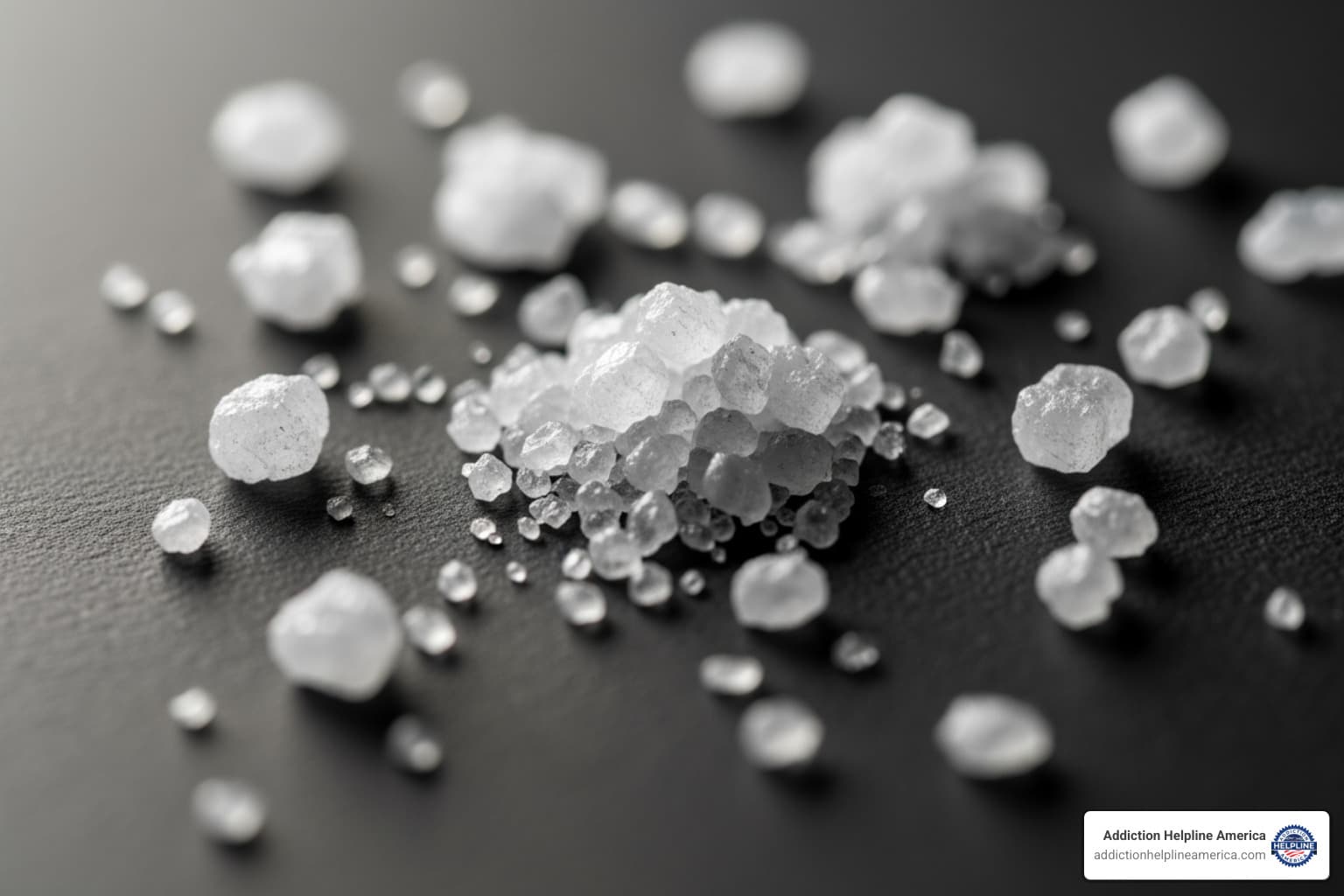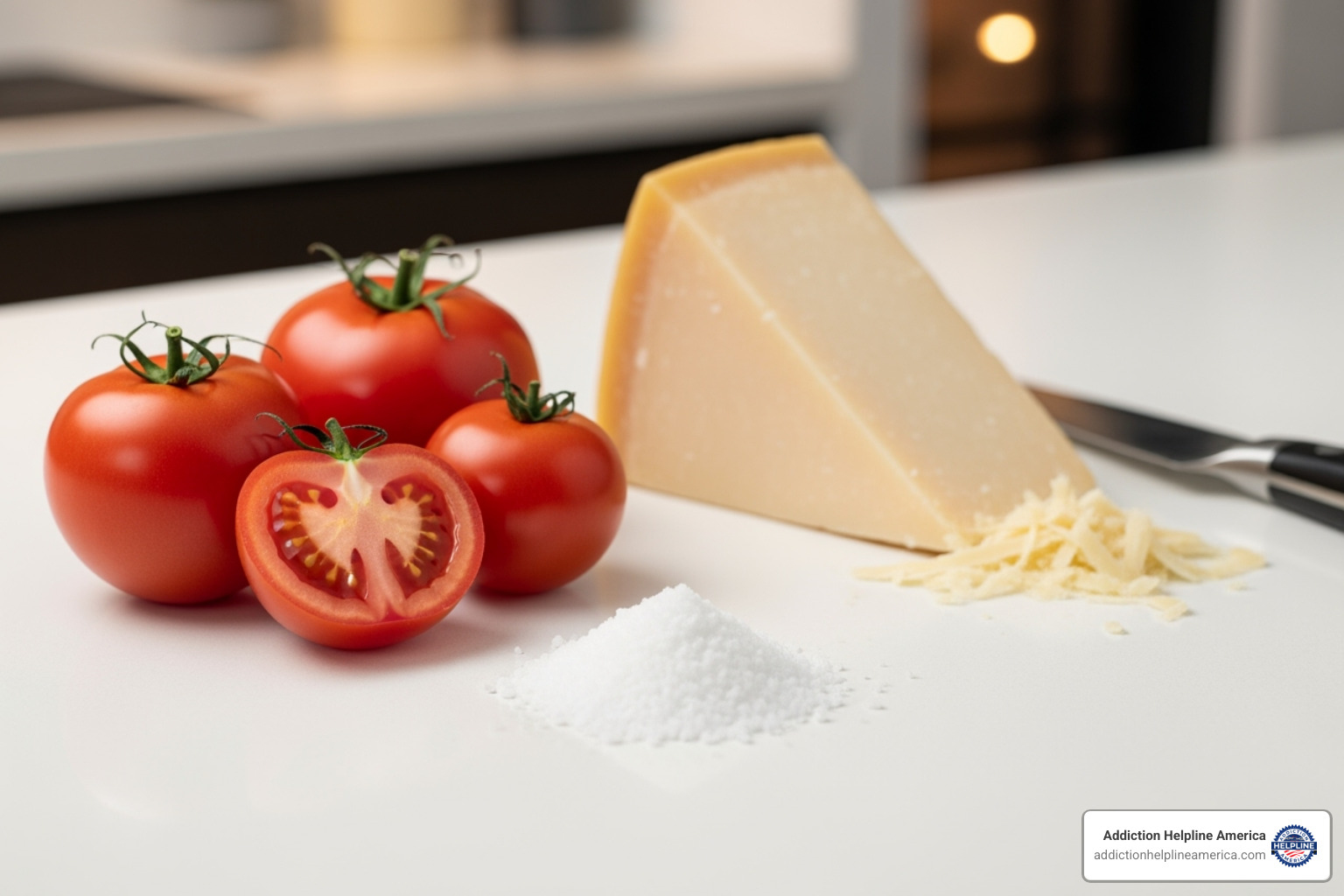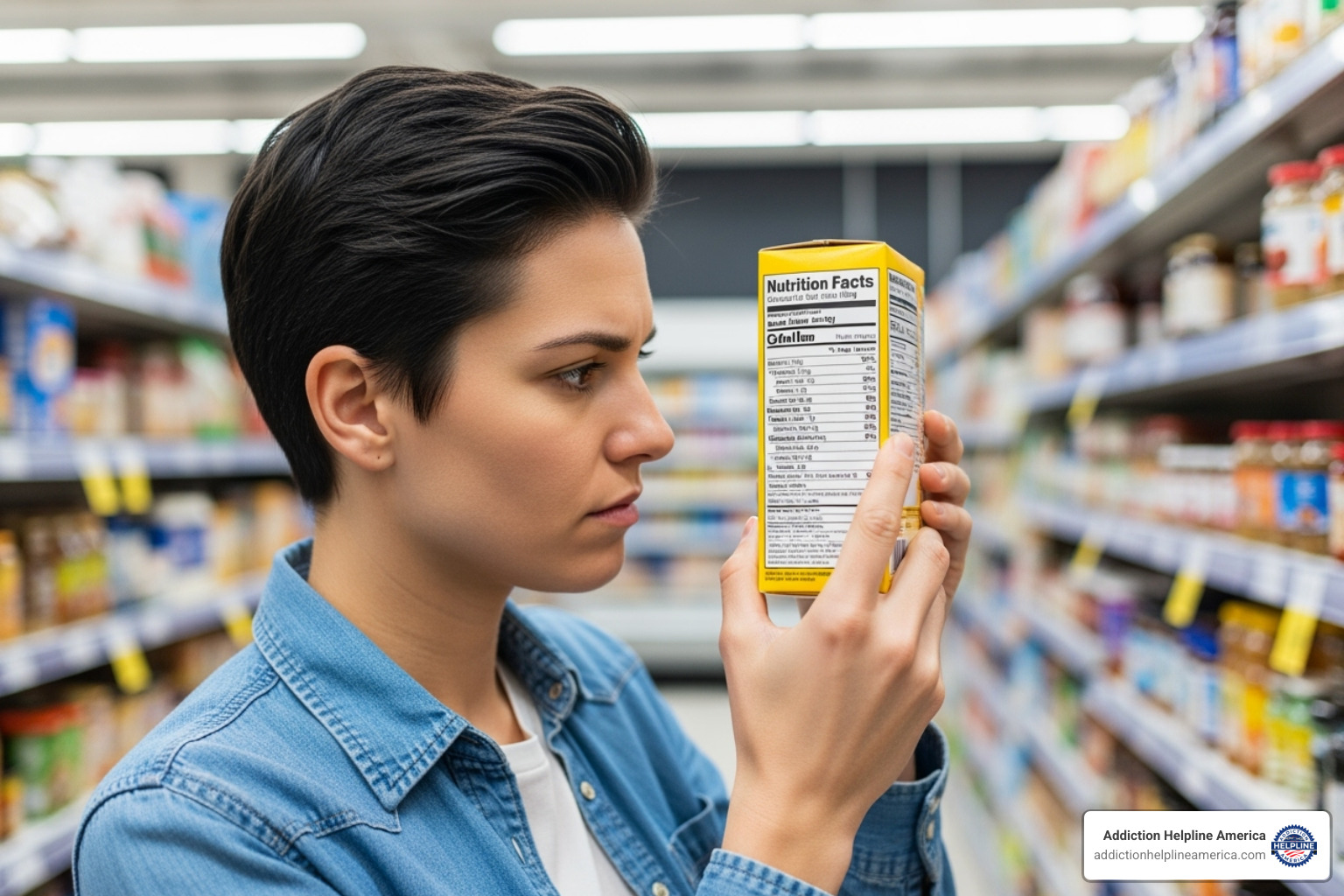
Understanding the MSG Controversy and Addiction Concerns
Can you be addicted to msg? The short answer is no. MSG (monosodium glutamate) does not meet the clinical criteria for addiction. Here’s what you need to know:
- No compulsive seeking behavior – People don’t seek out MSG itself
- No loss of control – You can limit consumption without difficulty
- No withdrawal symptoms – Stopping MSG causes no physical dependence
- Biologically implausible – Your body naturally produces glutamate, making addiction impossible
- Scientifically unsupported – No research demonstrates MSG creates addiction
MSG is a flavor improver that adds umami (savory) taste to food. While it can make food more enjoyable and palatable, this is very different from addiction. The confusion often stems from mixing up cravings for tasty food with true chemical dependence.
Regulatory bodies worldwide, including the FDA, classify MSG as “Generally Recognized as Safe” (GRAS). Any concerns about MSG typically relate to rare sensitivity reactions, not addiction.
If you’re worried about compulsive eating patterns or struggling with food-related behaviors that feel out of control, you’re not alone. Many people confuse strong food preferences or overeating with addiction. At Addiction Helpline America, we’ve helped thousands of individuals and families understand the difference between true substance addiction and other behavioral concerns, including questions about can you be addicted to msg. We’re here to provide clarity and support when you need it most.

First, What Are We Talking About? Defining Addiction and MSG

Before we can really answer whether can you be addicted to msg, we need to get clear on what we’re actually talking about. What does addiction really mean? And what exactly is MSG? Let’s start with the basics, because understanding these two things will help everything else make sense.
The Clinical Definition of Addiction
When doctors and scientists talk about addiction, they’re describing something very specific. It’s not just really liking something or having a hard time saying no to dessert. Addiction is a serious medical condition that changes how your brain works.
True addiction involves compulsive use — that overwhelming urge to seek out a substance no matter what. Someone with an addiction will prioritize getting that substance above almost everything else in their life, even when they know it’s causing harm. There’s also a loss of control, where limiting use becomes nearly impossible even when the person desperately wants to cut back.
Addiction brings negative consequences that pile up over time. We’re talking about serious impacts on physical health, mental well-being, relationships, work performance, and financial stability. Yet despite all these problems, the person continues using.
One of the most telling signs is withdrawal symptoms. When the substance is stopped or reduced, the body and mind react. These symptoms can range from uncomfortable to dangerous, depending on the substance. This physical dependence is a hallmark of true addiction.
At the heart of addiction is the brain’s reward system, particularly the dopamine pathways. Addictive substances flood the brain with dopamine, creating intense pleasure and reinforcement. Over time, the brain changes, needing more of the substance just to feel normal. You can learn more about how this process works by exploring the causes of addiction and its effects on brain chemistry.
The Science of MSG and Umami
Now let’s talk about MSG itself. Monosodium glutamate is the sodium salt of glutamic acid, which is an amino acid that appears naturally all over our food supply. MSG is used as a flavor improver — it brings out that savory, satisfying taste we call umami.
If you haven’t heard of umami before, think of it as the fifth basic taste alongside sweet, sour, salty, and bitter. It’s that deep, savory, almost meaty flavor you taste in a rich broth or a perfectly aged cheese. It makes food taste fuller and more satisfying.
MSG is made through a fermentation process, similar to how we make yogurt, wine, and soy sauce. It was first identified in 1908 by a Japanese professor named Kikunae Ikeda, who isolated it from seaweed and realized it was the source of that delicious savory taste in traditional dashi broth.
Here’s something important: the glutamic acid in MSG is chemically identical to the glutamate that occurs naturally in foods. Your body can’t tell the difference between glutamate from MSG and glutamate from a tomato. Speaking of which, many everyday foods are packed with natural glutamate. Tomatoes, especially ripe ones, are loaded with it. Parmesan cheese is one of the richest sources you’ll find. Mushrooms, particularly shiitake varieties, contain significant amounts. Cured meats like bacon and ham, soy sauce, fish sauce, and seaweed all deliver that umami punch naturally.
The scientific research on MSG and Umami shows how glutamate activates specific taste receptors on our tongues, enhancing the overall flavor of food. Whether it comes from a crystal of MSG or a slice of tomato, the effect is essentially the same — it makes food taste better.
Can You Be Addicted to MSG? The Scientific Verdict
Now that we’ve defined addiction and MSG, let’s tackle the central question: can you be addicted to msg? Based on scientific understanding and regulatory consensus, the answer remains a resounding no. But let’s dig into why that is, and what the science actually tells us.
How Your Body Processes Glutamate
One of the most fascinating reasons why MSG cannot be addictive lies in how your body actually handles glutamate. Understanding this process helps clear up a lot of confusion.
Here’s something that might surprise you: your body naturally produces glutamate every single day. It’s an amino acid, one of the building blocks of protein, and it plays essential roles in metabolism and brain function. You’re literally making it right now as you read this.
When you eat MSG—whether from a shaker or naturally present in that delicious Parmesan cheese—your digestive system breaks it down into sodium and free glutamate in your small intestine. And here’s the thing: your body can’t tell the difference between glutamate from a ripe tomato and glutamate from added MSG. They’re chemically identical.
What happens next is pretty remarkable. About 95% of the glutamate you consume gets used as fuel by the cells lining your gastrointestinal tract. The remaining portion enters your bloodstream for metabolism or protein synthesis. Your gut is essentially running on glutamate as its preferred energy source.
Now, you might be wondering: “But doesn’t glutamate affect the brain?” Yes, glutamate does act as a major excitatory neurotransmitter in your central nervous system. However—and this is crucial—dietary glutamate doesn’t significantly affect glutamate levels in your brain.
The reason? Your blood-brain barrier. This protective mechanism acts like a highly selective security checkpoint, tightly regulating what enters your brain. While your brain makes and uses its own glutamate for signaling between neurons, the glutamate from your diet doesn’t bypass this barrier to directly alter brain chemistry in an addictive way. This biological reality makes the idea that can you be addicted to msg essentially impossible from a scientific standpoint.
So, can you be addicted to MSG? The short answer is no
Let’s put this to rest once and for all by comparing MSG’s effects to the clinical characteristics of addiction we discussed earlier.
When you look at compulsive seeking behavior, people simply don’t hunt down MSG itself. You won’t find anyone breaking into restaurants to steal packets of MSG or spending their rent money on pure monosodium glutamate. There’s no obsessive searching or craving for the substance itself.
Regarding loss of control, you can easily limit or stop eating foods with MSG without difficulty. There’s no overwhelming urge that overrides your better judgment or takes over your decision-making.
As for withdrawal symptoms, nothing happens when you stop eating MSG. You won’t experience headaches, tremors, nausea, anxiety, or any of the physical and psychological symptoms that characterize withdrawal from truly addictive substances.
The brain chemistry alteration that defines addiction simply doesn’t occur with MSG. Unlike addictive substances that flood your brain’s reward system with dopamine and create powerful cravings, MSG doesn’t cross the blood-brain barrier in significant amounts to alter neurotransmitter levels or create dependence.
Finally, from a biological plausibility standpoint, it makes no sense that you could be addicted to something your body naturally produces and needs for survival. It would be like being addicted to your own proteins or enzymes.
While some animal studies have explored whether MSG might induce “addictive alimentary behavior” by showing a preference for MSG solutions, these studies often use extremely high doses or injection methods that aren’t comparable to how humans actually consume MSG in food. The research consistently shows that when you eat MSG in normal amounts, your body processes it so efficiently in the gut that it has minimal impact on brain glutamate levels.
What Regulatory Bodies Say About MSG Safety
If MSG were truly addictive or dangerous, you can bet that major health organizations around the world would be sounding the alarm. Instead, they’ve done the opposite.
The U.S. Food and Drug Administration (FDA) has classified MSG as “Generally Recognized as Safe” (GRAS). This isn’t a casual designation—it means that qualified experts widely recognize MSG as safe based on extensive scientific evidence. The FDA has been quite clear, stating that “although many people identify themselves as sensitive to MSG, scientists have been unable to consistently trigger these reactions under controlled, double-blind conditions.” You can read more details on the U.S. Food and Drug Administration (FDA) guidance on MSG.
The Joint FAO/WHO Expert Committee on Food Additives (JECFA) takes it even further. This international scientific expert committee, administered jointly by the Food and Agriculture Organization of the United Nations and the World Health Organization, has placed MSG in the safest category of food ingredients. They established an acceptable daily intake (ADI) of “not specified,” which essentially means there’s no need to set an upper limit on consumption for healthy individuals. That’s a pretty strong vote of confidence.
The European Food Safety Authority (EFSA) also considers MSG and other glutamates safe for consumption. They’ve determined an acceptable daily intake of 14 mg per pound (30 mg per kilogram) of body weight per day. To put this in perspective, a typical serving of an MSG-enriched food contains less than half a gram of the additive. Even consuming 3 grams in one sitting—the amount sometimes linked to mild, short-term symptoms in highly sensitive individuals—is highly unlikely in a normal diet.
These regulatory bodies aren’t making these decisions lightly. They base their conclusions on decades of scientific research, rigorous testing, and continuous monitoring of food additives. Their consistent stance across different countries and organizations reinforces the scientific consensus: MSG is safe for most people when consumed as part of a balanced diet, and it is not addictive.
Cravings and Sensitivity: The Real Issues Behind the Myth

If MSG isn’t addictive, why does it have such a controversial reputation? And why do some people feel like they “can’t stop eating” certain foods that contain it? The answer comes down to two very different things: how delicious food affects our eating behavior, and genuine sensitivity reactions that affect a small percentage of people.
Why We Crave Umami-Rich Foods
Here’s the truth: we crave umami-rich foods for exactly the same reason we crave anything that tastes amazing. MSG improves that deep, savory flavor that makes food incredibly satisfying. When something tastes really good, we naturally want more of it. That’s not addiction—that’s just being human.
Your brain releases dopamine when you eat enjoyable food. It’s the same “feel-good” response you get from listening to your favorite song, getting a hug from someone you love, or watching a beautiful sunset. This is completely normal and healthy. The key difference? True addiction involves compulsive behavior, loss of control, and physical dependence. Enjoying tasty food and wanting seconds doesn’t meet that threshold.
The science around MSG and appetite is actually quite fascinating and somewhat contradictory. Some early research suggested that MSG might interfere with leptin, the hormone that signals fullness to your brain, potentially leading to overeating. Other studies found the opposite—that umami-rich foods might actually help people feel more satisfied and eat less. Still other research showed no significant effect on body weight or appetite at all.
What does this tell us? The relationship between flavor improvement and how much we eat is complicated and highly individual. It’s definitely not the straightforward “MSG makes you overeat” story that some people claim. More importantly, even if MSG does make certain foods more appealing and easier to overeat, that’s fundamentally different from the question can you be addicted to msg. Palatability isn’t addiction.
Think about it this way: you might say “I’m addicted to pizza!” after eating three slices, but you’re using the word casually. You’re not experiencing withdrawal symptoms if you skip pizza for a week. You’re not lying to loved ones or risking your health to get pizza. You just really, really like pizza. That’s how MSG works—it makes food taste better, which might lead you to eat more, but it doesn’t create the compulsive, uncontrollable patterns that define true substance addiction.
If you can’t be addicted to MSG, what causes the symptoms?
Now, let’s address the elephant in the room. Some people do report feeling unwell after eating MSG. This is real, and their experiences are valid—but it’s not addiction.
Back in the 1960s, this phenomenon was unfortunately labeled “Chinese Restaurant Syndrome,” a culturally insensitive term that unfairly stigmatized Asian cuisine. Today, medical professionals call it MSG Symptom Complex (MSC), and it’s far less common and dramatic than the old name suggests.
People who experience MSC might notice headaches, skin flushing, sweating, or a feeling of weakness. Some report numbness or tingling, muscle tightness, nausea, or heart palpitations. These symptoms are typically mild and short-lived, usually appearing within the first two hours after eating.
Here’s what the research tells us: MSC affects less than 1% of the population. For those rare individuals who do react, it typically requires consuming 3 grams or more of MSG on an empty stomach. A typical serving of food with added MSG contains less than half a gram. You’d have to eat an enormous amount of MSG-improved food in one sitting to reach that threshold.
It’s also worth considering what else might be going on. Many foods traditionally blamed for MSG reactions—think large restaurant meals—are also high in sodium, fat, and various other ingredients that can cause discomfort. Sometimes what people attribute to MSG is actually a reaction to the overall richness of the meal, the high salt content, or even just eating too much too quickly.
The bottom line? If you genuinely experience uncomfortable symptoms after eating certain foods, that’s worth paying attention to. You might have a sensitivity to MSG, or you might be reacting to something else entirely. But these physical reactions, while uncomfortable, are completely different from addiction. There’s no compulsive seeking, no loss of control, no withdrawal, and no evidence that your brain chemistry has been hijacked in the way that happens with truly addictive substances.
Frequently Asked Questions about MSG
We often encounter the same questions about MSG, especially given how persistent the myths surrounding it can be. Let’s tackle some of the most common concerns people have.
Are foods with “No Added MSG” healthier?
Here’s the thing: a “No Added MSG” label doesn’t necessarily mean what you think it means, and it certainly doesn’t automatically make a food healthier.
When you see that label, it simply means the manufacturer didn’t add monosodium glutamate directly to the product. However, many food companies use other ingredients that are naturally packed with free glutamates—the exact same compound that makes MSG work its flavor magic. These sneaky sources include yeast extract, hydrolyzed vegetable protein, autolyzed yeast, soy extract, and protein isolate.
Your body doesn’t know the difference. Whether the glutamate comes from a packet of MSG, a tomato, or hydrolyzed protein, it’s all processed the same way. So that “no added MSG” label? It’s often more of a marketing move than a health guarantee.
When you’re trying to figure out if something is actually good for you, look at the bigger picture. Check the overall nutritional content—how much sodium does it have? What about fat, sugar, and fiber? Are the ingredients whole foods or highly processed mystery substances? These factors matter far more than whether MSG was added directly.
Interestingly, some research suggests that using MSG as a partial salt substitute can actually help reduce overall sodium intake in foods by about 3%, without losing any of that delicious flavor. Since MSG contains approximately one-third the amount of sodium as table salt, it can sometimes be part of a lower-sodium strategy.
Are foods naturally high in glutamate addictive?
If you’re wondering can you be addicted to msg, then it follows that foods naturally loaded with glutamate should also be addictive, right? But that’s just not what we see in the real world.
Think about Parmesan cheese, ripe tomatoes, mushrooms, cured meats like bacon, and soy sauce. These foods are absolutely delicious. Many of us would say we “can’t live without” our morning bacon or that perfectly aged Parmesan on pasta. We enjoy them, we crave them, we look forward to them.
But here’s the difference: we don’t exhibit the hallmark signs of addiction. We’re not compulsively seeking out Parmesan in the middle of the night, unable to control our consumption despite serious negative consequences. We don’t experience withdrawal symptoms if we skip the bacon for a week. We don’t lose jobs or relationships because we can’t stop eating mushrooms.
As one researcher humorously noted, “As much as some people claim to love bacon, no one is truly addicted to it.” That statement perfectly captures the distinction between enjoyment and dependence, between palatability and addiction. The same principle applies to MSG and all glutamate-rich foods.
How much MSG is safe to eat?
The good news is that MSG is considered safe for the vast majority of people when consumed as part of a normal diet. Major regulatory bodies worldwide—including the FDA, JECFA, and EFSA—have extensively reviewed the research and consistently reached this conclusion.
The European Food Safety Authority has established an Acceptable Daily Intake (ADI) of 30 mg per kilogram of body weight per day. For an average adult weighing around 150 pounds (about 68 kg), that works out to roughly 2,040 mg, or just over 2 grams, every single day.
Now, let’s put that in perspective with what you actually eat. A typical serving of an MSG-enriched food contains less than half a gram of the additive. You’d have to consume multiple servings of heavily seasoned foods to even approach the ADI.
Even for the small percentage of people who are sensitive to MSG, symptoms typically only appear when they consume 3 grams or more in a single sitting, usually on an empty stomach. That’s significantly more than what most people encounter in their daily meals.
The bottom line? Unless you’re eating MSG by the spoonful (which, let’s be honest, would taste terrible), you’re well within safe limits. The amounts used in cooking and food manufacturing are modest and designed to improve flavor, not overwhelm your system.

The Bottom Line: Separating Fact from Fiction
So, let’s bring this all together. After examining the science from every angle, the answer to can you be addicted to msg is definitively no. MSG simply doesn’t meet any of the established clinical criteria for addiction. There’s no compulsive seeking behavior, no loss of control over consumption, and no withdrawal symptoms when you stop eating it. The way our bodies process glutamate—whether it comes from a sprinkle of MSG or a slice of ripe tomato—prevents it from directly altering brain chemistry in the way that truly addictive substances do.
Here’s what often happens: people confuse the pure enjoyment of delicious food with addiction. And honestly, that’s understandable. When MSG improves the umami flavor in a dish, it makes that food taste really good. Our brains light up with pleasure, and we naturally want more. But wanting seconds of your favorite stir-fry because it tastes amazing is fundamentally different from the physiological dependence that defines addiction. One is a normal human response to something enjoyable; the other is a serious medical condition.
The rare instances where people experience symptoms after consuming MSG—what we now call MSG Symptom Complex—are sensitivity reactions, not signs of addiction. These mild, short-lived responses affect less than 1% of people and typically only occur with unusually high doses. It’s worth noting that major regulatory bodies worldwide, including the FDA, JECFA, and EFSA, have consistently affirmed that MSG is safe for the general population.
The cravings you might feel for umami-rich foods are simply your taste buds doing their job and your brain appreciating good flavor. That’s not addiction—that’s just being human.

Now, if you’re reading this because you’re concerned about compulsive eating patterns or behaviors that genuinely feel out of your control, that’s a different conversation—and one worth having. At Addiction Helpline America, we understand the very real difference between enjoying tasty food and struggling with true substance use disorders or behavioral health challenges. If you or someone you care about is facing addiction to substances like alcohol, opioids, or other drugs, or if you’re dealing with compulsive behaviors that are impacting your life, we’re here to help.
We offer free, confidential, and personalized guidance to connect you with the right recovery program from our extensive network of treatment centers nationwide. You don’t have to steer this journey alone. Whether you have questions, need information, or are ready to take the first step toward recovery, our team is standing by to support you.
Our helpline is 100%
free & confidential
If you or someone you care about is struggling with drug or alcohol addiction, we can help you explore your recovery options. Don’t face this challenge alone—seek support from us.
Programs
Resources
Will my insurance
cover addiction
treatment?
We're ready to help
Find the best
drug or alcohol treatment
center
Are you or a loved one struggling with addiction? Call today to speak to a treatment expert.












